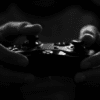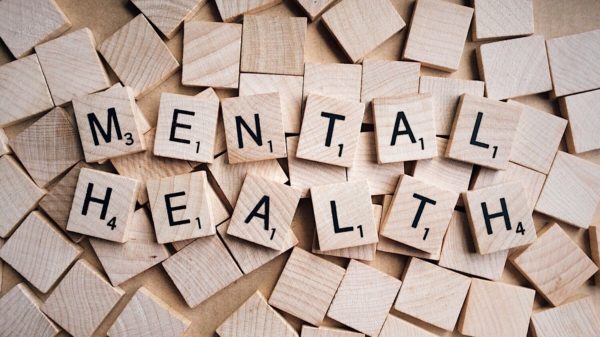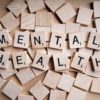Fearing dangerous or threatening situations is a normal emotional response. However, when you experience paralyzing fear and overwhelming emotions to things, places, people, or situations around, you may be living with a phobia.
Described as an irrational or excessive reaction, phobias are more common than you may think. Almost 9.1% of American adults have experienced some specific phobia in the past year alone. These phobias may be accompanied by severe anxiety symptoms, even when you realize that your fear is irrational.
Many people may experience similar phobic responses but the triggers may vastly differ. The Diagnostic and Statistical Manual of Mental Disorders (DSM-5) categorizes specific phobias into the following five classifications:
- Natural environment: Triggered by the elements or weather events
- Injury or blood: These may be caused by injections or medical procedures
- Animals: The irrational fear of animals, including dogs, spiders, or insects
- Situational: Being in certain situations can trigger this, such as elevators or airplanes
- Other: This may include being in circumstances that could lead to situations or objects that may trigger a phobic reaction
Let’s look at the most common phobias experienced by people the world over:
Social Phobia
Social phobia, also known as social anxiety disorder, is one of the most common phobias. Affecting almost 15 million American adults, this phobia involves the fear of social situations that involve unfamiliar people or places.
For people living with this phobia, there’s an intense fear of being humiliated, negatively judged, embarrassed, or rejected in social situations. The crippling fear often holds people back from doing things in public. Even something as seemingly mundane as walking down the street can become a challenge for someone who struggles with social phobia.
One of the major effects of social anxiety disorder is avoidance. In order to dodge the persistent fear of social situations, people often opt to stay away from things that may trigger it. This stress may disrupt your life and get in the way of your everyday activities.

Claustrophobia
This situational phobia is triggered by crowded or enclosed spaces. If you experience an intense fear when you’re in an elevator or windowless room, you’ll know the psychophysical effects of this phobia.
Studies suggest that up to 10% of the population experiences claustrophobia, but it could be even more common than that. Since the range of symptoms may differ between people, you could experience physical or psychological discomfort when faced with claustrophobic situations.
Small spaces aren’t the only thing that can cause a phobic response for people living with claustrophobia, it can be triggered by numerous situations. These may include wearing tight-necked clothes or feeling like you have no way to escape a place.
Agoraphobia
A combination of the above phobias, agoraphobia includes a fear of open spaces that can be perceived as dangerous or unsafe. As a type of anxiety disorder, the overwhelming fear caused by these situations can make you feel panicked or anxious.
According to estimates, about 1.3% of people experience agoraphobia at some point in their lives. Owing to the range of situations that could cause this phobia, it may be difficult to pin down whether you’re experiencing it.
Open spaces, shopping centers, public transport, or even stepping outside your home could trigger this fear, instilling the idea that you can’t escape this unsafe environment. Much like social phobia, agoraphobia usually leads to an avoidant response. To escape the fearful or helpless feeling of being outdoors, many people prefer to stay indoors and avoid unnecessary excursions.
Without getting the help you need, living with agoraphobia can result in crippling anxiety that gets in the way of everyday functionality.
Entomophobia

This phobia may not sound familiar, but the feeling of fear it causes is all too familiar to countless people. The irrational fear of bugs and insects stems from the fear that these minuscule bugs—such as ticks, lice, and bed bugs—can make you sick or cause harm.
Unlike the fear of snakes and spiders—which are often more far-fetched and less likely to harm you—the fear of bugs can actually culminate in physical harm. Bug bites and infestations are all too common, with lice causing 6–12 million infestations every year after all.
For someone living with entomophobia, the persistent and extreme fear of insects and bugs can cause a severe physical, psychological, and behavioral reaction. Thinking you might be contaminated by these bugs can result in severe avoidance of environments where you’re likely to encounter them. This common fear is usually responsible for people shying away from outdoor excursions like camping or visiting tropical locations.
Acrophobia
The panic, fear, and avoidance of anything related to heights is referred to as acrophobia. This phobia may be completely irrational or the result of learned fears owing to your socialization or childhood experiences. Either way, the fear of heights can considerably hinder the lives of people living with it.
Since phobias are anxiety disorders, acrophobia results in a host of psychosomatic symptoms. Affecting almost 5% of the population, the fear of heights often leads to sweating, trembling, lightheadedness, and increased heart palpitations.
One of the more serious outcomes of acrophobia is the perception of movement even when there is none—this is referred to as vertigo and is usually confused with acrophobia itself. Vertigo is an effect of the fear of heights, causing dizziness, the feeling of spinning, and nausea. If you happen to look down from a tall building, the resulting spinning dizziness you feel is vertigo!

Learn how to conquer fears and phobias
Don’t let phobias hold you back from experiencing all the amazing things life has to offer. Overcoming fear is the first step to a happy life and it all begins by taking back control of your life. When you don’t give it the power to affect you, the phobias will soon dissipate.
Whether you have to deal with overcoming the fear of heights or the fear of flying, change starts within you. With the help of informative resources and dedicated treatments, you can unlock the secret to thriving in life.
Always remember that help is within your reach—all you have to do is take the first, brave step toward it!
—
An expert at GetOverPhobia.com, the author is dedicated to improving the quality of people’s lives and helping them break free from the clutches of phobias and fears. The online resource provides at-home and online treatment programs to help people everywhere. Their knowledge bank includes books, insightful resources, and self-study programs to help people reach their goal of conquering their phobias.
A content writer with various interests - technology, industry, home improvement and renovation, automobiles are some of them.
























































































































































































